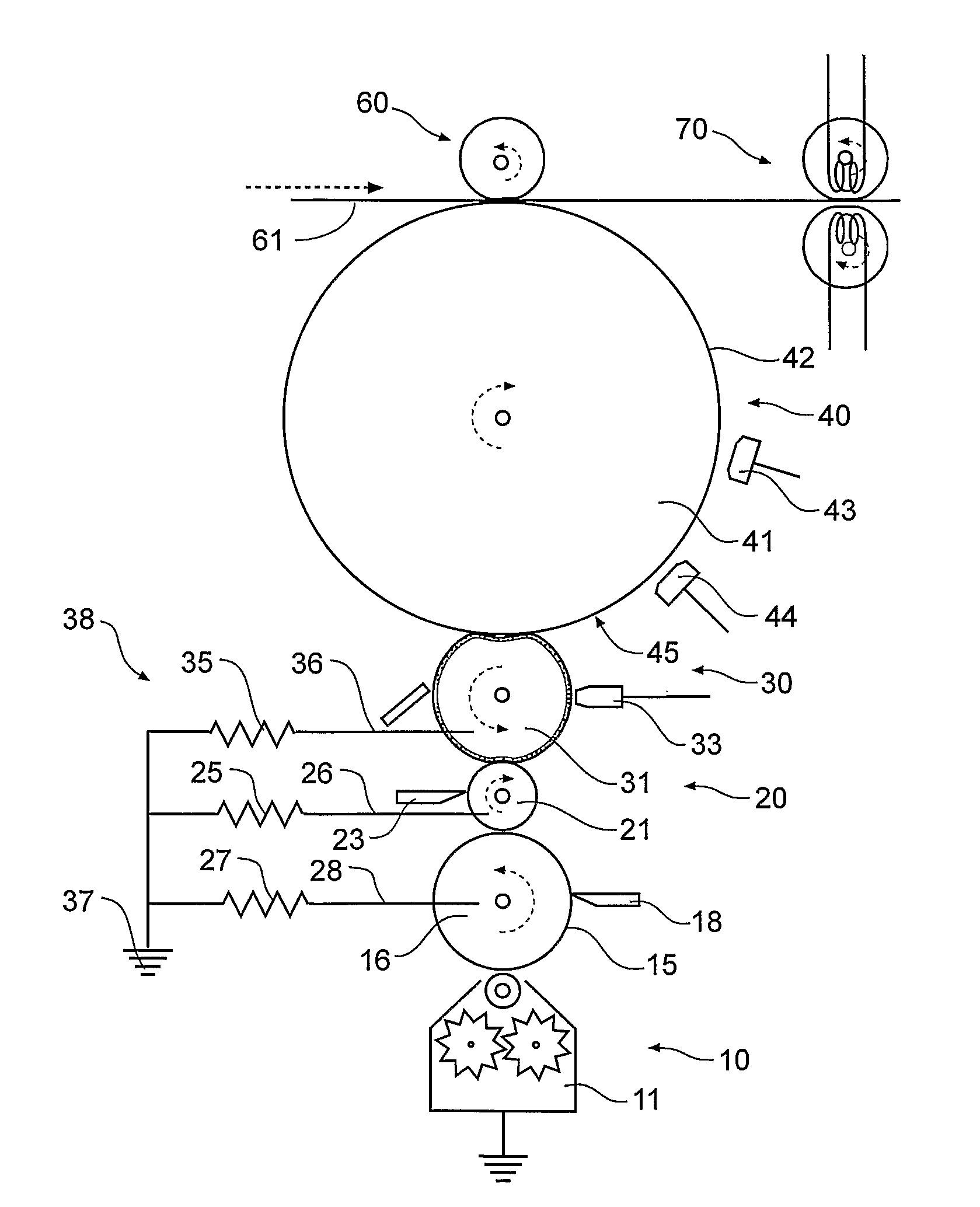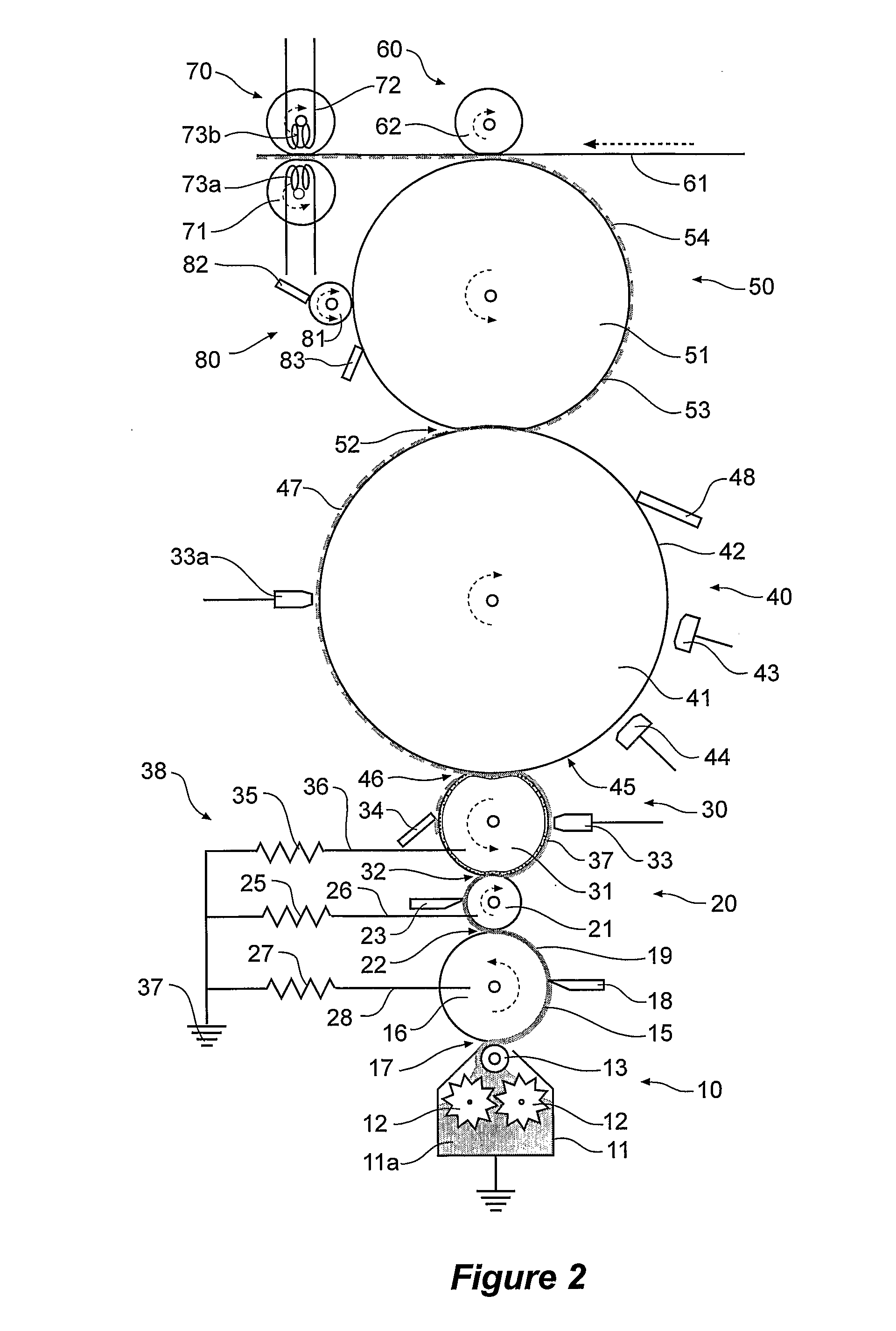Electrostatographic printing machine
a printing machine and electrographic technology, applied in the field of electrographic printing machines, can solve the problems of variable image performance, mechanical failure of the device, and inability to achieve highly resolved developed images, so as to reduce the overall running cost of the electrographic printing system, reduce manufacturing costs, and simplify the design of the print engine
- Summary
- Abstract
- Description
- Claims
- Application Information
AI Technical Summary
Benefits of technology
Problems solved by technology
Method used
Image
Examples
Embodiment Construction
[0083]Now looking at FIG. 1, this drawing shows a schematic electrostatic printing apparatus according to the present invention.
[0084]In FIG. 1, the schematic electrostatic printing process generally has a toner supply stage 10, a toner metering apparatus 20, a development stage 30, an imaging stage 40, a transfer to substrate stage 60 and a fixing stage 70.
[0085]Toner is supplied by the toner supply stage 10 from a toner tank 11 to a pick-up roller or toner supply roller 16. The pick-up roller or toner supply roller 16 has a doctor blade 18 bearing against it to provide an even thin layer of high viscosity toner on the pick-up roller or toner supply roller 16.
[0086]The pick-up roller or toner supply roller 16 is spaced apart from a metering roller 21. The metering roller 21 has a pattern of recesses on its surface and a doctor blade 23 bearing against the metering roller 21 scrapes essentially all of the high viscosity toner off the metering roller 21 except that toner which is wit...
PUM
 Login to View More
Login to View More Abstract
Description
Claims
Application Information
 Login to View More
Login to View More - R&D
- Intellectual Property
- Life Sciences
- Materials
- Tech Scout
- Unparalleled Data Quality
- Higher Quality Content
- 60% Fewer Hallucinations
Browse by: Latest US Patents, China's latest patents, Technical Efficacy Thesaurus, Application Domain, Technology Topic, Popular Technical Reports.
© 2025 PatSnap. All rights reserved.Legal|Privacy policy|Modern Slavery Act Transparency Statement|Sitemap|About US| Contact US: help@patsnap.com



